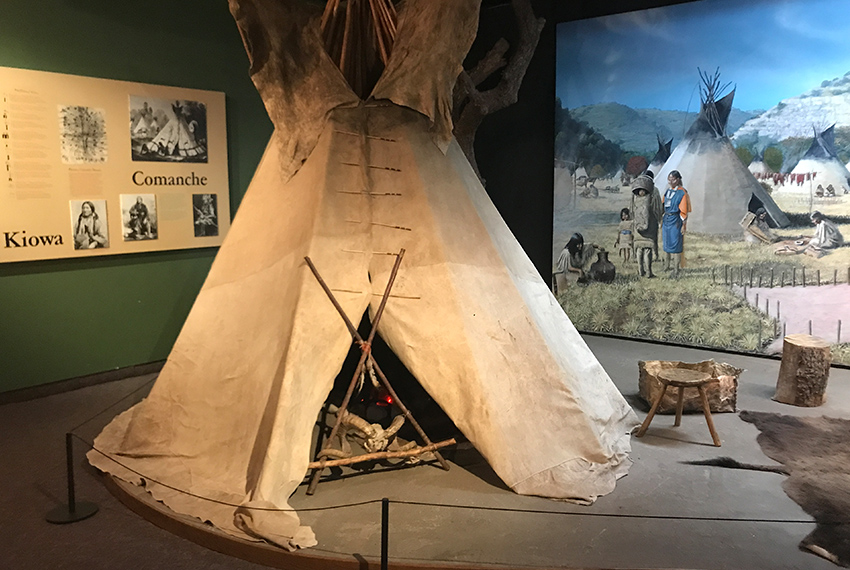The UTSA Institute of Texan Cultures plans to refresh content in the American Indian exhibit area through the spring and summer, enriching the story to offer museum visitors a more comprehensive look at Texas’ indigenous peoples.
Situated in one of the ITC’s exhibit floor corners, the American Indian exhibit is one of the museum’s larger anchor exhibits. It includes three floor-to-ceiling murals with interactive presentation areas, plus kiosks, images, and displays featuring artifacts and information.
“So much has changed about the American Indian story since the exhibit was installed,” said Veronica Rodriguez, interim head curator. “There have been smaller revisions for accuracy, new knowledge, and some artifacts, but now we have space to expand on the story.”
The expanded gallery space will include additional tribal communities such as the Mission Indians, and a new look at the “Urban Indian” living in today’s Texas.
“We’ve built bridges with the American Indians in Texas at the Spanish Colonial Missions (AIT-SCM),” said Rodriguez. “With their guidance, we will provide a space for their narrative, where they can tell us more about who they are today. These relationships and collaborations are critical to our work, as they enable us to capture an authentic experience.”
“AIT-SCM is excited to partner with ITC on this effort to expand and evolve the American Indian gallery,” said Ramon Juan Vasquez, executive director at AIT-SCM. “The evolution of our aboriginal people demonstrates the continuum contributions throughout history of this great state as well as the contributions made today by their descendants.”
Prior to the initial COVID-19 public health measures, the Institute had begun revising its American Indian section, thanks to a Summerlee Foundation grant. Staff members were updating text and narrative portions of the exhibit to reflect new research, knowledge, and perspectives on native peoples. Additionally, lenders have requested certain artifacts returned, freeing gallery space for new material.
“This is our responsibility as an academic institution,” said Rodriguez. “Over the past 50 years, we’ve seen history from new perspectives. Research and evidence have revealed new information. The way we tell stories and what we tell stories about – the pedagogy of museums – has changed. Removing the portion of the American Indian exhibit that housed pottery now gives us an opportunity to expand and evolve. This is what the modern institute is all about.”
The ITC projects the American Indian section will reopen in May.
